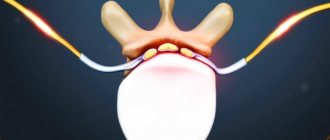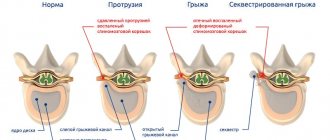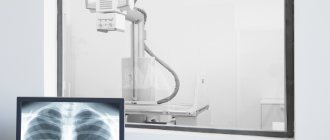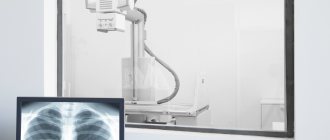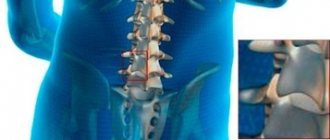Causes of cervicalgia
There are two main types of disease: vertebrogenic cervicalgia, the cause of which is associated with damage to the cervical spine, and non-vertebrogenic, which is based on damage to the muscles, ligaments, and nerves in the neck.
Vertebrogenic cervicalgia can result from diseases such as herniation or protrusion of the intervertebral disc, rheumatoid arthritis, spondylosis, osteoarthritis, trauma to the cervical spine, or a tumor in this area.
Cervical cervicalgia of a non-vertebrogenic nature can be a consequence of diseases such as myositis of the occipital muscles, sprain or muscle sprain or subluxation in the neck, neuritis of the occipital nerve, as well as psychogenic causes of development.
The inflammatory process can be localized in the area of the dura mater (meningitis), in the area of the epidural space (between the vertebrae and the dura mater), and may also result from hemorrhage under the arachnoid membrane. Damage to the vertebral artery, such as its dissection or thrombosis, is one of the causes of cervicalgia.
Factors that provoke the development of cervicalgia will be: uncomfortable posture during sleep, performing static work with a load in the cervical-collar area, infections, both in the spine and in other areas of the human body.
Cervicalgia syndrome is a symptom complex that includes limited mobility in the cervical spine, pain in the back of the head, numbness or a tingling sensation (“pins and needles”) in the fingers, as well as dizziness and tinnitus.
Cervicalgia can have a chronic course with long-term causative diseases, the presence of provoking factors, as well as severe clinical symptoms.
Cervicalgia - symptoms and treatment
Restorative treatment of ShPS must be timely, comprehensive, differentiated and take into account pathogenetic mechanisms, severity of pain, features of the course of the disease and stages of exacerbation.
An integral part of the complex treatment of cervicalgia is physiotherapy, since it has broad potential to influence the leading links in pathogenesis and activate sanogenetic reactions, positively influencing the body as a whole, without giving allergic reactions. Physical therapy has significantly reduced and less severe side effects compared to drug therapy, and almost all types of physical therapy are used, including natural methods of treatment.[26]
So, to relieve pain, the following are used:
- electrophoresis of anesthetics;
- pulse currents: DDT, SMT;
- alternating low-frequency electromagnetic field;
- darsonvalization;
- laser therapy;
- ultraviolet and infrared radiation;
- ultrasound or phonophoresis of analgin, anesthesin;
- cryotherapy.
UHF therapy , used in the acute and subacute stages of the disease, has a pronounced anti-inflammatory and absorbable effect This enhances immunological processes, stimulates the functions of the reticuloendothelial system, improves trophic and reparative processes in tissues, microcirculation, and also has an analgesic and antispasmodic effect.
Laser radiation has an anti-inflammatory and analgesic effect, especially infrared laser. In addition, laser radiation helps to normalize impaired microcirculation, activate trophic processes in the area of inflammation, reduce tissue swelling, stimulate regeneration processes in nervous tissue, favorably influencing the restoration of excitability and helping to slow down further degeneration of cartilage tissue.
Ultrasound and ultraphonophoresis of medicinal substances have the most pronounced stimulating effect on recovery processes, as they affect the trophic and adaptive functions of the body, have a resolving, anti-inflammatory, antispasmodic, fibrolytic, hyposensitizing, as well as a pronounced analgesic effect. The specificity of the action of ultraphonophoresis depends on the pharmacological action of the administered drug. Thus, phonophoresis of hydrocortisone is more appropriate to use for the aseptic-inflammatory mechanism of vertebral syndrome, and aminophylline or ganglerone - for vascular disorders and phenomena of peripheral vasospasm; for radicular pathology, the administration of acetylsalicylic acid is most justified.
Methods aimed at eliminating hemodynamic disorders are pulse therapy , especially interference therapy and magnetotherapy. They are aimed at normalizing the pathologically altered tone of the main arteries and capillary beds, improving microcirculation. In addition, darsonvalization and ultratonotherapy reduce vascular spasm and reduce the sensitivity of nerve endings.
Specific treatment methods include kinesitherapy , which, due to its wide range of action and influence, the absence of negative side effects and the possibility of long-term use, can be used at all stages of the disease.
Massage is the most commonly used type of passive kinesiotherapy, which not only has a direct mechanical effect on tissue, but also has neurohumoral and reflex reactions from various systems such as motor-visceral reflexes, which normalize the tone of blood and lymphatic vessels, increase muscle tone and elasticity and improve their contractile function.[8][11][23][31]
orthosis are also widely used , which leads to a reduction in muscle-tonic syndrome, promotes the expansion of intervertebral foramina, reduces intradiscal pressure and reduces disc protrusion.[12]
Osteopathy is the leading method of non-drug treatment. Today, various techniques are widely used, from “hard” chiropractic to “soft” osteopathic, and the doctor’s efforts are aimed at eliminating pathobiomechanical manifestations and developing compensatory reactions. Often quoted by osteopaths E.T. Still wrote that “any method (of treatment) is good if it produces results.” Osteopathy in the complex restorative non-drug treatment of SBS is used independently and in combination with other types of treatment, which include physiotherapy and physical therapy.[1][16][20][21]
These types of treatments can be successfully used at all stages of medical rehabilitation. Manual therapy is used both independently and in combination with other treatment methods that increase its effectiveness, such as physiotherapy, exercise therapy, balneotherapy, therapeutic blockades and drug therapy. The greatest effect is observed with a combination of manual therapy and acupuncture. Today, extensive experience has been accumulated in the use of reflexology in the treatment of ShBS. Acupuncture has a regulating, stimulating and normalizing effect on the functional state and reactivity of various body systems, adaptive-trophic function and metabolic processes, affects vascular tone, improves microcirculation, helps improve cerebral and peripheral blood flow, relaxes spasmodic muscles.[15][17]
A comprehensive, comprehensive examination of patients allows for differential diagnosis, assessment of biomechanical disorders, identification of factors aggravating the course of the disease, determination of the severity and nature of autonomic disorders, which helps to increase the effectiveness of therapeutic and preventive measures for cervical pain syndromes.
Treatment of vertebrogenic cervicalgia
Cervicalgia, the treatment of which you can receive at Belozerova’s hardware therapy clinic “M-Clinic”, requires modern and high-quality therapy using physiotherapeutic procedures.
Cervicalgia is treated with an integrated approach, which includes the prescription of painkillers, muscle relaxants, unloading of the cervical spine (Schanz collar), therapeutic exercises, as well as physiotherapy.
Chronic cervicalgia responds well to physiotherapeutic procedures carried out by a specialist, which creates the basis for the successful resolution of this disease.
Cervicalgia, which can be treated in our clinic, must be treated in order to avoid complications.
Symptoms of the disease
The diagnosis is made in the presence of dystrophic or traumatic changes in the spine identified during examination (MSCT or MRI), as well as in the presence of the following symptoms:
- Pain in the neck, without radiating.
- Tension of the muscles of the neck and collar area.
- Crunch in the neck.
- “Wedging” of the neck.
Why does cervicalgia occur?
The most common causes of cervicalgia:
- Spinal diseases and neck injuries.
- Arthritis (pain and decreased mobility occur due to destruction of ligaments).
- Incorrect posture.
- Physical inactivity, little physical activity, or, conversely, grueling training and heavy lifting.
- Congenital pathologies of the spine.
- Poor nutrition, insufficient fluid intake.
- Obesity.
- Infections and tumors.
- Stress, tension.
- Bad habits.
Medicines
Photo: anews.com
The main group of drugs in the treatment of cervicalgia are non-steroidal anti-inflammatory drugs (NSAIDs). This group of drugs has effects such as anti-inflammatory, antipyretic and analgesic. These effects are achieved by blocking varieties of the enzyme COX (cyclooxygenase). COX is found in all tissues of the body and is responsible for the production of various biologically active substances, including prostaglandins. In turn, prostaglandins are a mediator of inflammation. The more of them in the body, the more pronounced the inflammatory process. NSAIDs, by blocking the action of COX, reduce the inflammatory process and reduce pain.
Among the NSAIDs for the treatment of cervicalgia, preference is given to drugs such as diclofenac, nimesulide, ibuprofen, and indomethacin. Prescribed in the form of tablets, the frequency of administration depends on the severity of pain. In addition, you can act locally; in such cases, ointments and gels (Nise, Dicloran, Voltaren emulgel) are used.
Since long-term use of NSAIDs can lead to gastrointestinal complications, proton pump inhibitors are prescribed. Their purpose is aimed at protecting the gastric and duodenal mucosa from the damaging effects of NSAIDs.
Proton pump inhibitors are well tolerated and can be prescribed for a long term (up to 1 year). Among their representatives, omeprazole (omez), pantoprozole, and rabeprozole are used. Prescribed 1-2 times a day, an hour before meals.
Muscle relaxants are medications that relax muscles. Their use for cervicalgia allows you to shorten the duration of treatment and reduce the dosage of other drugs. Prescribed in the form of tablets or injections. To achieve the effect, you must take the tablets for at least 10 days; the most pronounced effect is achieved by using medications in the form of injections.
For cervicalgia, the following drugs are most often prescribed from muscle relaxants:
- tolperisone (mydocalm). This drug is available both in tablets and in the form of injections. The effect is achieved within 24 hours immediately after the first dose. However, do not forget that to reinforce the effect, it is necessary to extend the intake to at least 10 days.
- tizanidine (sirdalud). The effect of this drug is similar to tolperisone and is to reduce local pain. There is one difference - this drug does not have a mild sedative effect, so it is often prescribed in the evening.
Prednisolone is used among glucocorticosteroid drugs. It is prescribed only in cases where there is a pronounced clinical problem that does not disappear after a course of taking basic medications. The form of administration of the drug and dosage are determined by the doctor individually for each patient, since this drug has a number of side effects (increases blood pressure, suppresses the immune system, increases glucose levels in the blood and urine, promotes the development of osteoporosis).
Why is cervicalgia dangerous?
One should be wary not of cervicalgia itself, but of the pathologies and diseases that it indicates. Sometimes the cause can be very serious and even deadly (for example, in the case of meningitis). If the symptoms of the disease do not disappear after a few days, you should consult a doctor. Our specialists will help you restore the normal state of your body and avoid complications.
Diagnosis of cervicalgia
At your initial visit, specialists at the Osteopathic Spine Clinic will examine you, assess your condition, and choose the most appropriate method for diagnosing cervicalgia:
- Radiography
- MRI (Magnetic resonance imaging)
- Ultrasound (ultrasound examination)
- ECG (Electrocardiogram)
- Laboratory research methods
